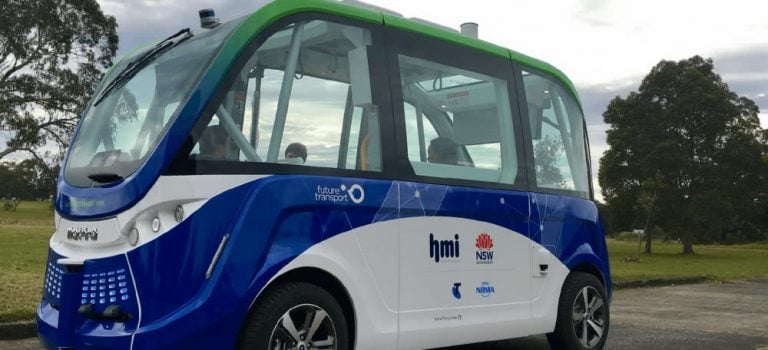If you happen to see a 15-person shuttle navigating around Sydney Olympic Park sans-driver in a few weeks, you shouldn’t attempt a heroic rescue, as you’ll basically just be assaulting a robot. Plus, you’ll never pull it off, let’s be honest.
The above nonsense is regarding the start of a two-year trial of automated vehicles at Sydney’s Olympic Park, tests which will soon see commuters travelling in the shuttle to work, events, or simply to bask in the futuristic thrill of riding in a driverless vehicle.
The shuttle will drive at around 20 kms/hour (although I assume the speed will be more accurately programmed than my “around” suggests) but can reach peak speeds of 50 kms/hour that we know of.
The first trials will be (obviously) passengerless, as well as driverless.
David Verma, who has the ominous title of Autonomous Vehicles Director at HMI Technologies — the company carrying out the tests — told the ABC there are a number of well-monitored and controlled safety measures in place.
“It follows a track that is pre-programmed. It has an accuracy of 20 millimetres at the moment, which is pretty extraordinary. We’re using an external GPS system which also coordinates the shuttle and helps the shuttle remain accurate.”
The Government’s fact sheet about the trials notes the ‘Smart Shuttle’ is built by French company Navya, and has the capacity to carry up to 15 passengers.
Love Music?
Get your daily dose of metal, rock, indie, pop, and everything else in between.
They also act to assuage public fears, explaining: “This vehicle has a number of cameras at the front and rear and advanced sensors like laser radar that the vehicle uses to understand its surrounding, detect and anticipate any risks of a collision and then use technology like autonomous emergency braking to avoid collisions. The vehicle is also equipped with two emergency stop buttons.”
If the word “understand” gave you an involuntary shiver, you’re not alone. The idea of driverless cars is a reality now, and that they will be integrated into our city is inevitable.
Roads Minister Melinda Pavey told the Tele the trial is the first step in introducing automated vehicles to the city’s infrastructure.
“We want to use the trial to help develop the systems that will enable automated vehicles to be connected to our infrastructure, like traffic lights and to our customers through their devices and applications. It’s the combination of connectivity and automation that will provide the safety and mobility benefits we are looking for.
“There is still some way to go before automated shuttles become common place on Australian roads, but as a Government we are ready to take the next step and from here all sorts of possibilities open up for transport in NSW.”
Of course, with such evolution comes the death of the song ‘Hail To The Bus Driver’, and the bittersweet realisation that all things have a nature lifespan. Except Keith Richards.


































